
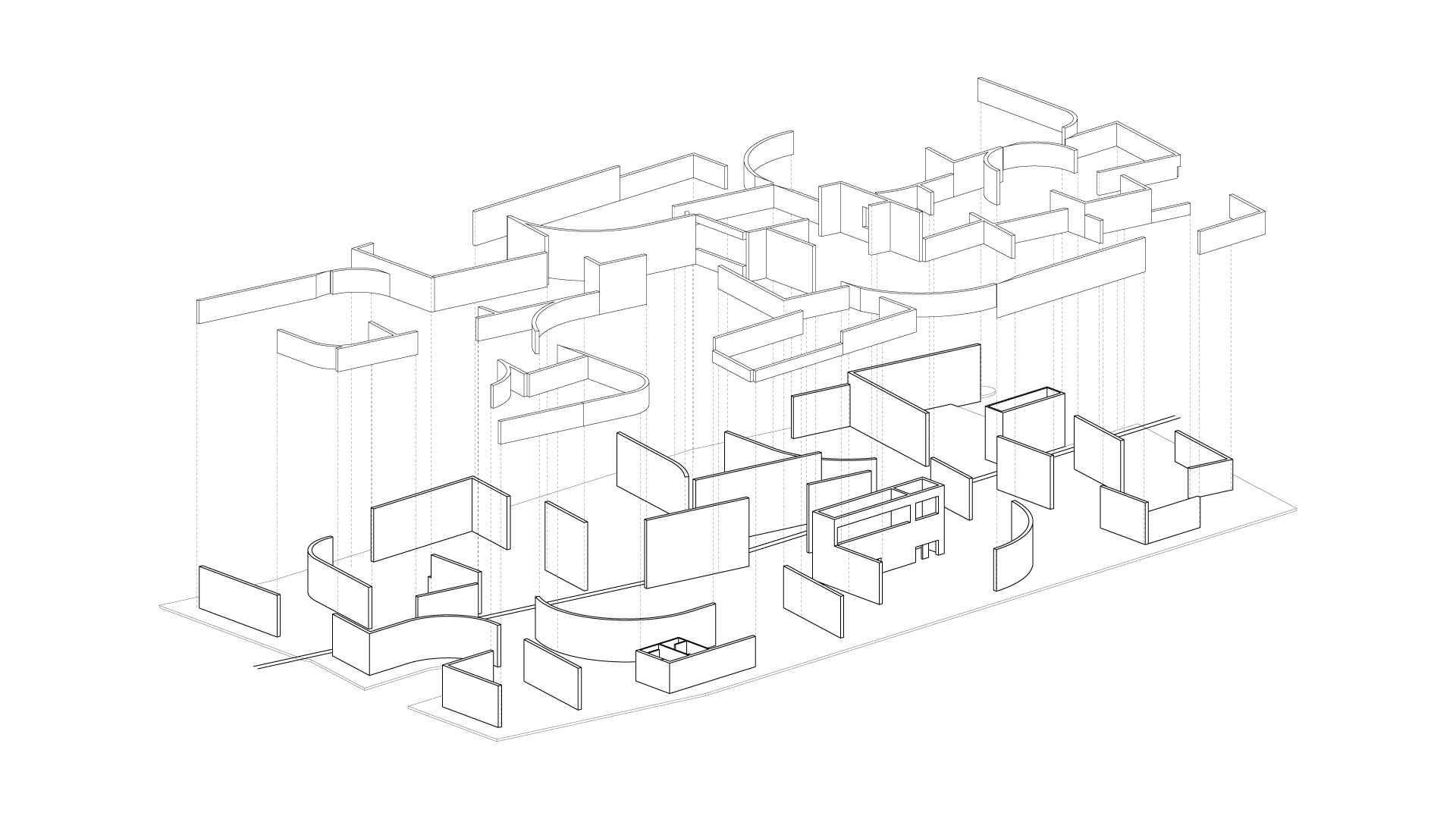
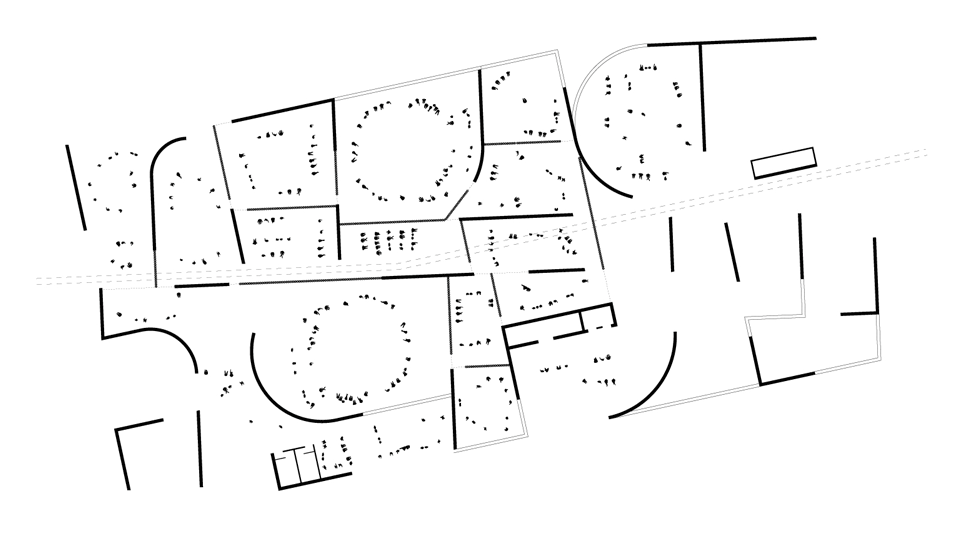
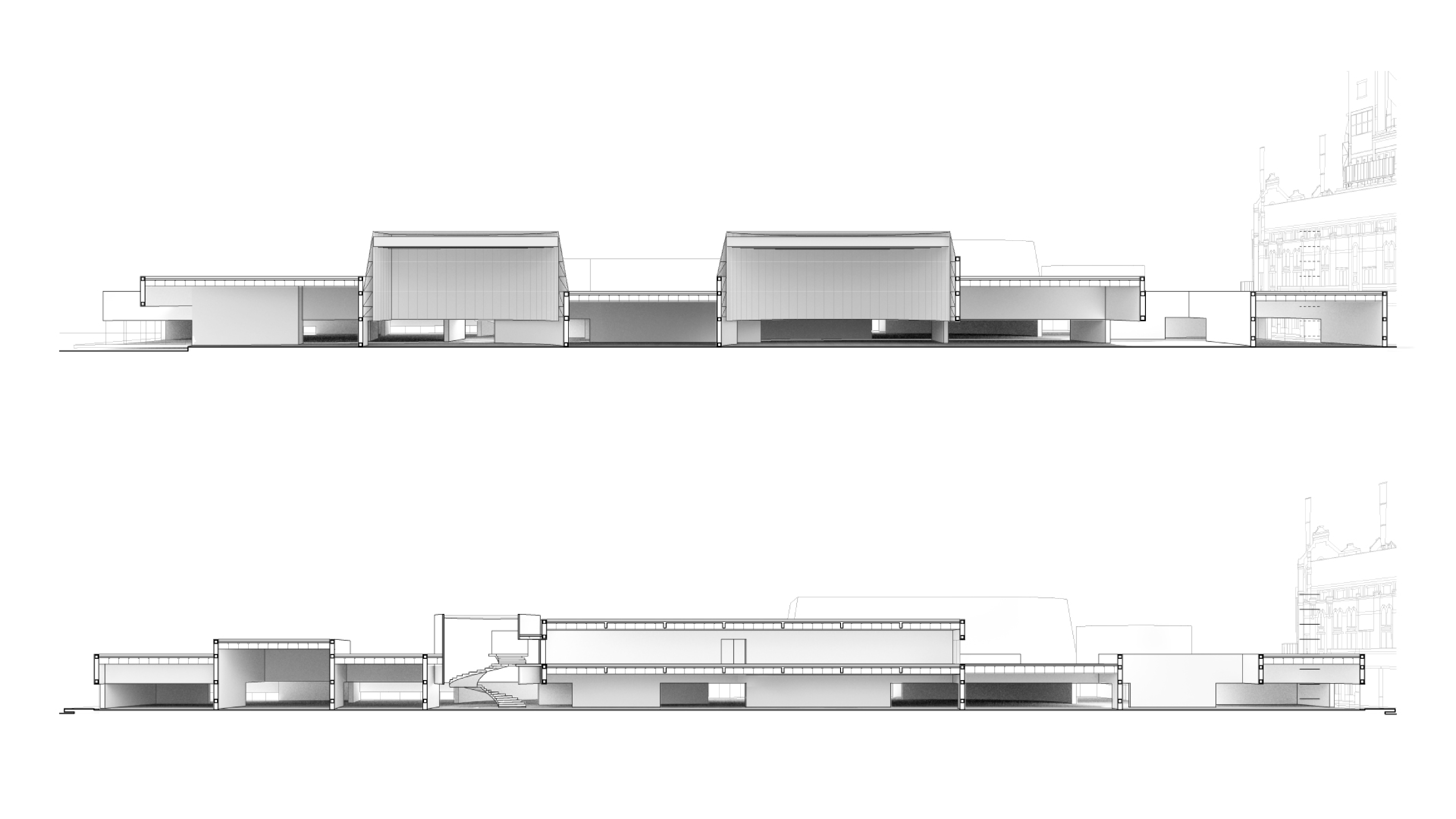
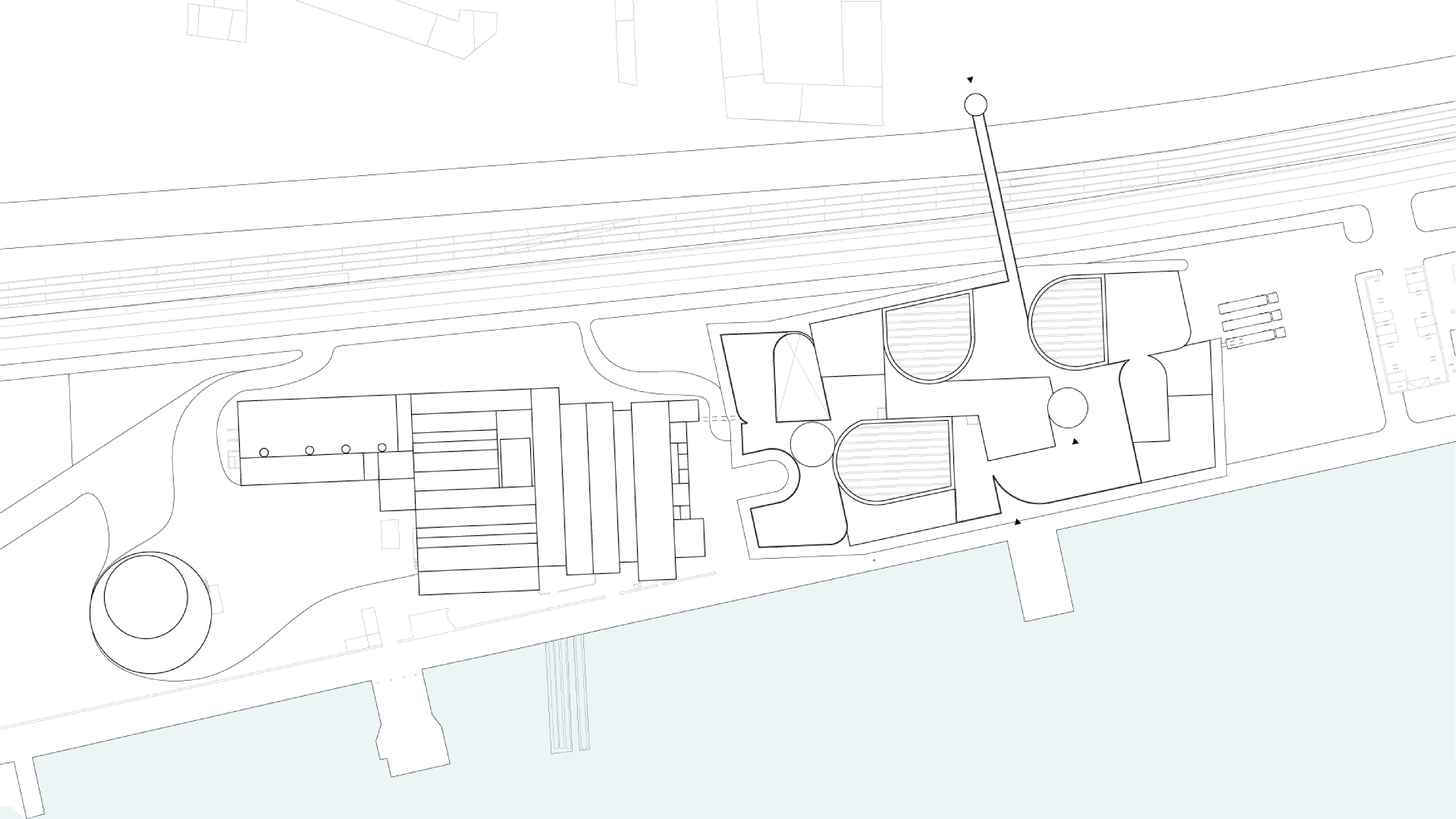
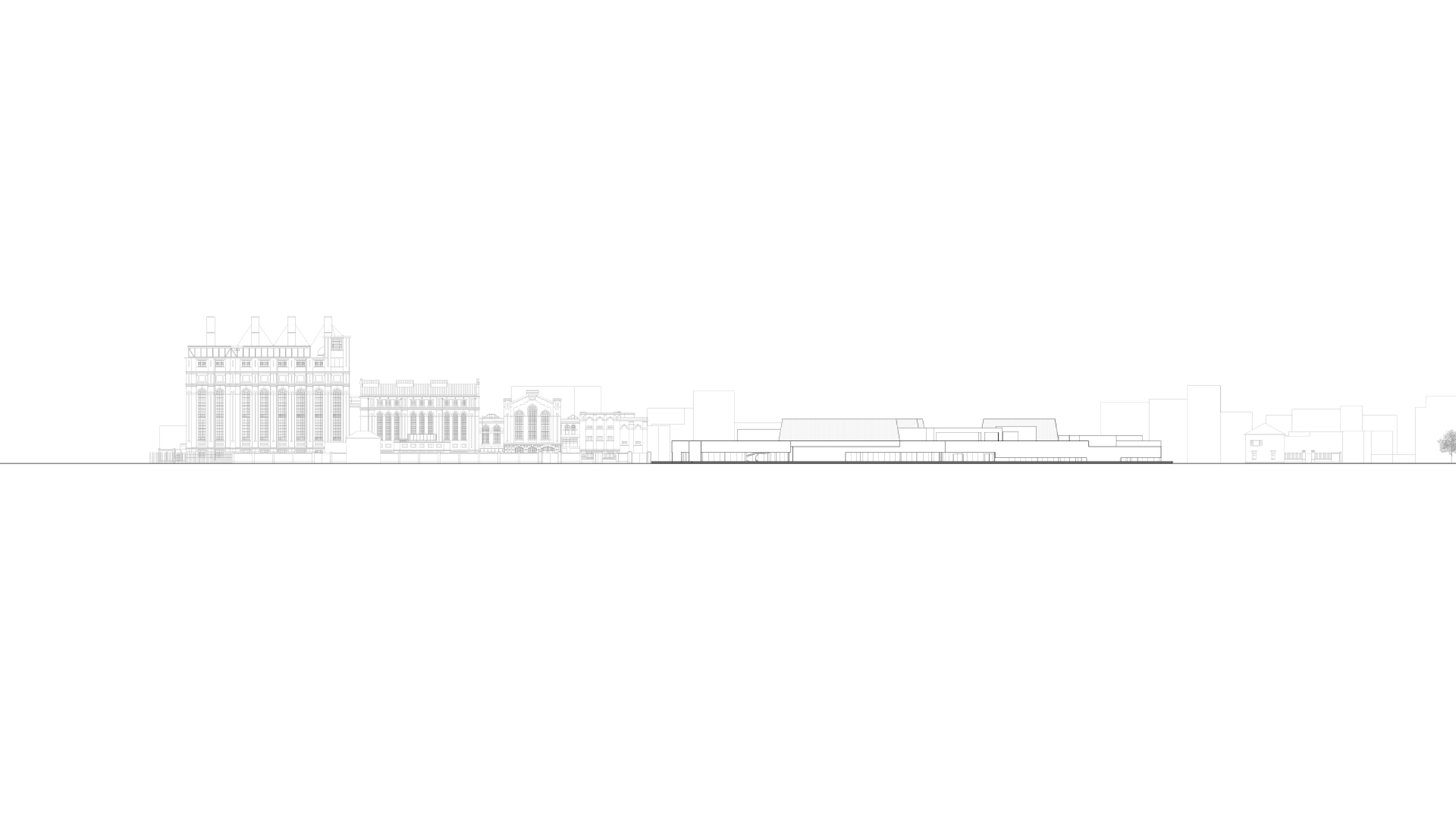





MAAT MUSEUM
This project investigates possibilities for the manipulation of the white cube typology in current metropolitan museums. The sterile nature of the white box participates in the production of meaning for modern artworks, as much as the works themselves.
Through the distortion of such generic white boxes, this project aims to generate a museum type where the threshold of recognition, for art and for the museum’s spatial dimensions and characteristics, is divergent and flexible, rather than predictable and static.
While the blank nature of the conventional white box is associated with a curatorial status quo and prescribed paths of circulation, this project aims to make space for multiple and varied routes through the building, and invites artists to take part in the making of the museum’s spaces - returning the agency of prescribing meaning to their own works to them.
The manipulation of spatial registration, disturbing what is expected of corners, grids, lighting, and walls, opens the museum to mis-perceptions of its spaces and systems. In designing moments of purposeful perceptual misalignment, there is a potential for more deliberate and creative intervention and improvisation.
Two grids, extending from the Tejo power station and the Tagus river, are distorted by rotation, misalignment, division, and introduction of curves. As the manipulations take place, every space is affected from different origins. The boundaries between the neighboring spaces are registered selectively by fragments of walls and corners, allowing for a sense of spatial continuity and disorientation throughout the museum.
The key aim of the architecture is that spatial perception is never focused on a single point but instead is constantly fluctuating between neighboring spaces and beyond. While the doorless threshold advocates for a disorienting museum space, the two staircases under natural light work as navigation devices that lead people to both sides of the museum and to the roof. People can wander freely around the museum and make intuitive decisions about way-finding based on criteria such as the light that emanates from the museum’s staircases and perimeter.
These strategies attempt to eradicate the conventional expectation of a prescribed, linear circulation through the museum. Once you enter through the service area of the museum and pass the staircases on both sides, you are free from curatorial association in the museum. In these spaces, which reach beyond definitions of type and defy easy characterization, this architecture projects greater potential for artistic and curatorial intervention.
The porous exhibition spaces can be dissected, merged, filled or expanded. In addition, the patterns on the polished floor serves to dissolve boundaries between spaces, and between the above space and ground. In this dissolution of the white cube, the museum looks to a future where the space of display is solidified by interactions and performances of visitors and artists rather than by predetermined forms and systems.
It would be impossible to have a retrospective of an artist with their art displayed in chronological order, because the navigation is a free-associative process. It’s more about pairings and juxtapositions, seeing one thing next to another at a different scale and letting visitors decide for themselves what the relationship between a few pieces is, or if there is one at all. In the countless combinations of spaces and routes by which the museum can be experienced, visitors and artists share an invitation to interpret the unstable signs presented by this architecture, and to uniquely define the sequences of its experience for themselves. Curatorial ownership, as such, is undermined as an activity that holds authority over the narratives conveyed by a museum.
Art is already both full of implied meaning and open to the spectator to attach meaning to it, and now the system of the museum enhances the openness in attaching meaning that could even render something meaningless. In a way, making an even blanker slate than the white cube, because nothing is stable about the environment that the art is going in, and it is up to the art to stabilize it.
Location: Lisbon, Portugal
Year: 2020
Type: Cultural
Size: 90,000 SF
Status: Concept Design